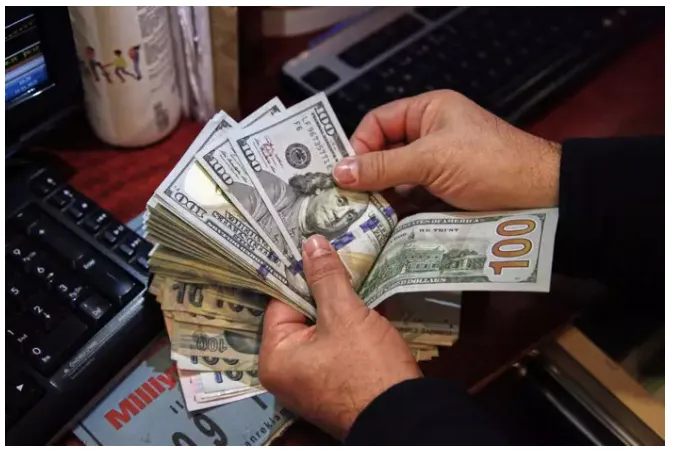简体中文
繁體中文
English
Pусский
日本語
ภาษาไทย
Tiếng Việt
Bahasa Indonesia
Español
हिन्दी
Filippiiniläinen
Français
Deutsch
Português
Türkçe
한국어
العربية
Market nerves prop up safe-haven dollar, yen
Abstract:The yen held most of its overnight gains on Friday, after falling U.S. yields and market jitters propped up the Japanese currency while another Wall Street selloff drove flight-so-safety bid to dollar, which remains near 20-year high peaks.

The yen was at 129.14 per dollar on Friday morning, softening on the day after it had reached a two-week peak of 127.5 overnight.
Thursdays 1.2% decline for dollar/yen was its biggest daily percentage fall this year. The euro/yen cross declined 2.5%, its biggest daily percentage fall since 2016 as the common currency a victim of the “risk off” mood.
“The yen is perhaps the most obvious signal of a shift from a world where yields were dominant and risk was resilient (yen negative), to a world this week where the dominant force is sour risk appetite driving yields lower (yen positive),” said Alan Ruskin, macro strategist at Deutsche Bank in a note.
The benchmark U.S. 10-year yield was 2.8822% having declined each session this week from Mondays high of 3.203%.
Rising U.S. yields at a time when the Bank of Japan was intervening to keep Japanese benchmark yields pinned down caused the yen to soften this year.
Investors are continuing to move towards safe-haven assets fearing central bank rate hikes to constrain inflation could hit global economic growth while MSCIs gauge of stocks around the world fell to its lowest level overnight since November 2020.
After the Fed raised its benchmark overnight interest rate by 50 basis points last week, the largest hike in 22 years, investors are assessing how aggressive the central bank policy path will be.
Expectations are completely priced in for another hike of at least 50 basis points at the central bank‘s June meeting, according to CME’s FedWatch Tool.
The euro was at $1.038 approaching its 2017 low of $1.034. A break past that would be its lowest in nearly 20 years.
The weak euro kept the dollar index at 104.75, just off its overnight 20-year peak of 104.92.
Sterling hunkered down at $1.2206, and the Aussie dollar was also bruised at $0.6887.
Crypto markets were steadier on Friday after a week of turmoil, as the risk-off mood combined with the spectacular collapse of stable coin TerraUSD.
The sell-off has taken the combined market value of all cryptocurrencies to $1.2 trillion, less than half of where it was last November, based on data from CoinMarketCap, and sent bitcoin to as low as $25,401.05 on Thursday, its lowest level since Dec. 28, 2020.
But things were calmer in early trading on Friday with bitcoin up 1.73% trading around $29,400.

Disclaimer:
The views in this article only represent the author's personal views, and do not constitute investment advice on this platform. This platform does not guarantee the accuracy, completeness and timeliness of the information in the article, and will not be liable for any loss caused by the use of or reliance on the information in the article.
Read more

Unlocking the Power of Algo Trading: Benefits and Limitation
Algorithmic trading merges speed, data, and automation—but can it outsmart human intuition and market chaos? Explore its power and pitfalls.

Enlighten Securities Penalized $5 Million as SFC Uncovers Risk Control Failures
A $5 million fine and executive suspension spotlight systemic risk management failures—how did a licensed firm bypass safeguards for over two years?

WikiEXPO Global Expert Interview: JinDao Tai ——The Future of Forex Trading
In the era of rapid changes in financial innovation and regulation, WikiGlobal, as the organizer of WikiEXPO, has always been at the forefront of the industry, capturing key topics with keen insight and presenting deep thinking and forward-looking perspectives to the industry through a series of unique interviews. This time, we are honored to invite Mr. JinDao Tai, the Managing Director of Jindaotai.com.

President of Liberland Vít Jedlička Confirms Attendance at WikiEXPO Hong Kong 2025
Vít Jedlička, President and Founder of the Free Republic of Liberland, has confirmed his participation in WikiEXPO Hong Kong 2025, one of the most influential Fintech summits in the industry. The event will bring together global leaders, innovators, and policymakers to delve into the future convergence of technology and society.
WikiFX Broker
Latest News
Forex Market Outlook: Key Currency Pairs and Trading Strategies for March 24–28, 2025
Singapore Police Crack Down on Scams: $1.9M Seized, 25 Arrested
Gold Prices Swing Near Record Highs
XTB Opens New Dubai Office
Africa Cybercrime Bust: Over 300 Arrested in Fraud Crackdown
The Growing Threat of Fake Emails and Phishing Scams
Hong Kong Banks and Authorities Collaborate to Freeze Fraudulent Accounts Faster
SocialFi and the Forex Market: A New Era for Decentralized Social Trading?
Is Billion Bucks Fx Scam?
BaFin Halts USDe Token Issuance, Citing Serious Compliance Failures
Currency Calculator







